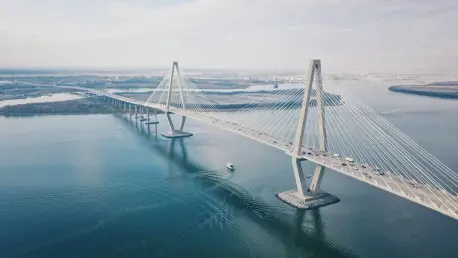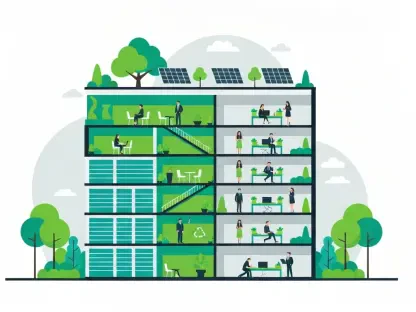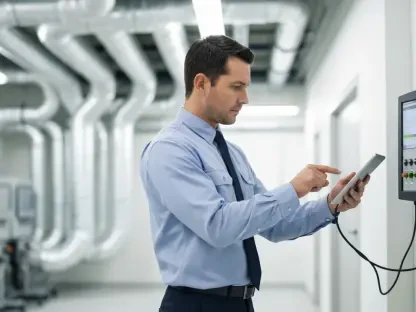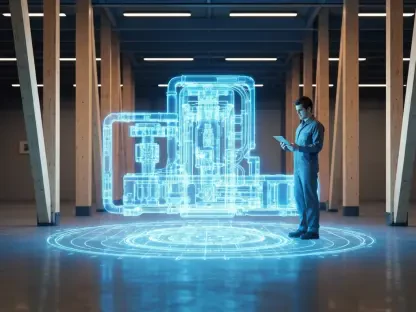The city of West Haven, Connecticut, has embarked on an ambitious infrastructure project set to redefine how motorists navigate the I-95 corridor. This $136.5 million endeavor, overseen by the Connecticut Department of Transportation (DOT), aims to replace two aging bridges that span over 1st Avenue and the Metro-North Railroad tracks. Spearheaded by The Middlesex Corp. and design engineer H&H, this significant overhaul promises substantial improvements not only in traffic flow but also in the longevity and safety of these critical structures. With these bridges over 70 years old, the rehabilitation signifies a pivotal stride towards fortifying infrastructure against future challenges.
Enhancing Traffic and Safety on I-95
Upgrading Infrastructure for a Modern Era
The keystone of this project centers around providing a modern, robust infrastructure that can withstand the demands of contemporary vehicular traffic. By addressing core traffic concerns, such as congestion reduction and enhanced safety measures, the project promises to transform the daily commute for the multitude of drivers reliant on these routes. Notably, the new bridges are projected to have a serviceable life span of at least 75 years, ensuring that the benefits of today’s investment will be felt for decades. The American Society of Civil Engineers has underscored the critical state of many of the nation’s bridges, hence this initiative stands as a testament to proactive management amid an evolving climate.
Bridging the Gaps in Commute Efficiency
Beyond simply replacing the existing spans, the project endeavors to alleviate persistent congestion woes by extending the southbound lane from Exit 44. This extension creates a continuous travel lane, which eventually transitions into an exit-only lane for Exit 43, thereby smoothing out traffic flow considerably. Additionally, the enhancement of drainage systems, traffic signals, shoulders, and lighting are integral to this upgrade, reflecting an all-encompassing approach to infrastructure refinement. These improvements are expected to substantially reduce the commute challenges faced by over 142,000 daily drivers, presenting a highway experience characterized by greater predictability and reliability.
Economic and Environmental Impacts
A Workforce Driven Initiative
From an economic perspective, the West Haven bridge project is set to employ approximately 100 workers, thus contributing to the local employment landscape. Predominantly funded by federal resources, covering 90% of the overall expenditure, the project also encompasses a 10% funding contribution from state finances. This federal-state financial partnership underscores the strategic importance placed on investing in and maintaining essential infrastructure, which not only supports economic vitality but also ensures that Connecticut remains a competitive hub for future developments. The phased completion of this project by 2027 illustrates a calculated approach to construction management and funding allocation.
Environmental Considerations and Future-Proofing
In light of increasing environmental concerns and the threats posed by extreme weather, the project emphasizes improved stormwater management as part of its comprehensive scope. By enhancing drainage systems, the infrastructure is poised to better withstand severe weather events, a vital consideration in today’s climate-aware society. Moreover, these upgrades significantly reduce future maintenance costs, providing fiscally responsible solutions that balance immediate infrastructural needs with long-term sustainability. The foresight involved in this project aligns with broader trends in national infrastructure strategy, embracing principles of durability and adaptability in the face of environmental uncertainties.
The Future of Connecticut’s Transportation Network
The city of West Haven, Connecticut, has initiated a major infrastructure project that aims to transform how drivers move along the I-95 corridor. This $136.5 million project, managed by the Connecticut Department of Transportation (DOT), focuses on replacing two outdated bridges. These bridges stretch over 1st Avenue and the Metro-North Railroad tracks and are more than 70 years old. The replacement is a key part of enhancing both traffic flow and the longevity and safety of these essential infrastructures. This significant overhaul is led by The Middlesex Corp. in collaboration with H&H, the design engineer, highlighting the importance of the project in reinforcing infrastructure to meet future demands. Besides improving current traffic conditions, this initiative will largely contribute to ensuring that the structures are resilient against future challenges. By addressing these aging structures, the project marks a crucial step in strengthening the area’s infrastructure, enhancing safety, and preparing for long-term urban transportation needs.









